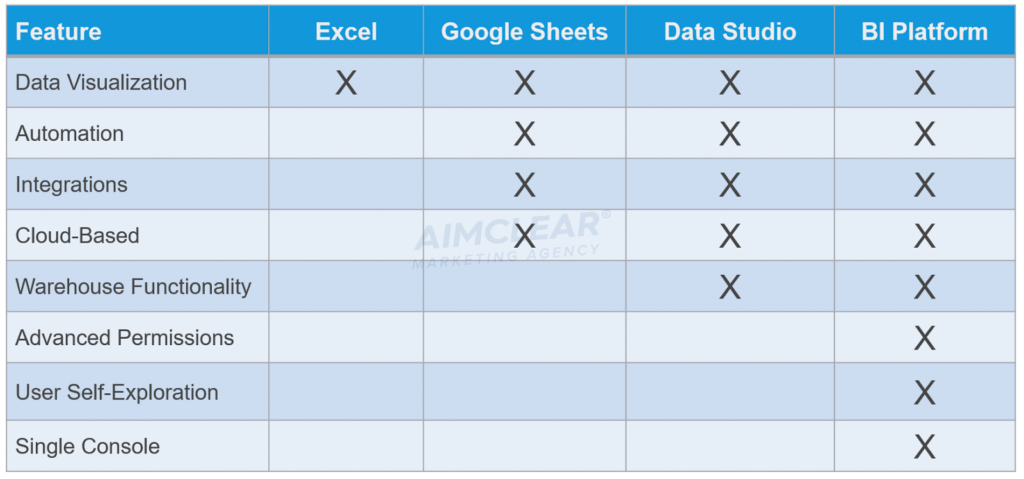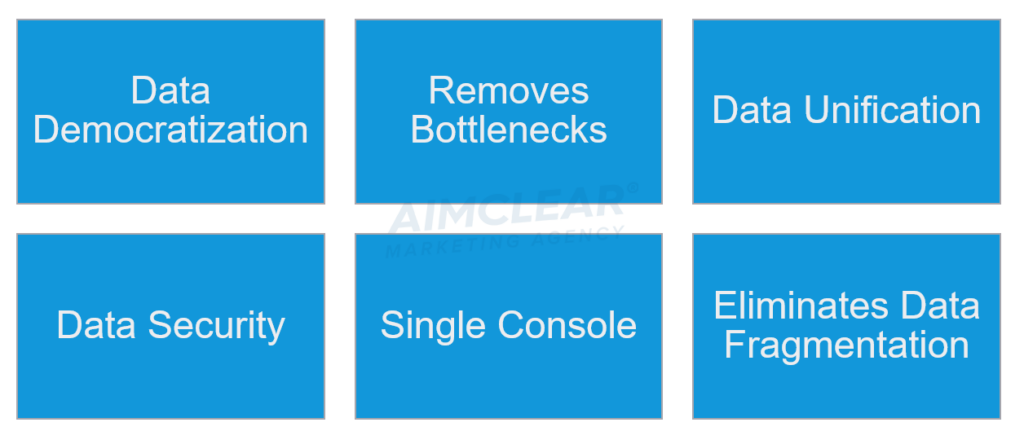
Today’s hotshot marketing execs often find themselves in really tough positions from the C-suite to the boardroom. Charged with growing business AND proving the value of marketing, marketing leaders need critical insight more than ever. Proving success and value – often with less-than-perfect visibility into how marketing components are working together can lead to heartburn, sleepless nights and a lot of stress.
Successful marketers feel this pinch on a daily basis, and it makes sense. Why would any business expect less for their marketing investment? All too often, as martech stack complexity increases, information silos become more likely. Siloed data hinders executives’ ability to accurately prove value while developing defensibly sound and actionable marketing programs to propel the business forward.
At the end of the day, these business marketing leaders need meaningful data insight to make better decisions faster. The marketing ops team, charged with measuring performance and reporting, is a key teammate. However, marketing ops folks are often overloaded and unable to really dig into the data AND report the most valuable data insight up the chain.
Business Intelligence & Marketing
Business Intelligence has become table stakes across most data-driven business functions through massive enterprise software systems. Yet BI is still a disparate, confusing concept for many marketers, particularly with the explosion of data dependency over the past few years.
Systems, processes and procedures are still a wild frontier for a lot of marketing-specific BI. Let’s look at some of the underlying factors.
First, whether formal or informal, many companies have some level of standard operating procedure when it comes to how data is disseminated within the marketing team. But what are the best procedures – and how does a marketing exec know which ones to tap?
Some create dashboards upon request or export excel outputs, some may automate reports in Google Sheets and still, others may utilize a dashboard like Google Data Studio to provide specific views of KPIs. Others love the idea of data democratization and endeavor to place the data in the hands of marketers allowing them to self-explore. All the while, misinterpretation of data can easily lead to poor decisions, not better. There are advantages and disadvantages to each of these approaches as shown in the chart below.
Let’s have a look at the feature in detail.
Data Visualization
All solution options shown above do a workable job presenting data visually, some better than others. On top of that, some reports simply won’t require much more than a pivot table accompanied by a pivot chart updated each quarter. Assessing the complexity of the data, the demand for resources needed to visualize it and tech cost will narrow the focus to the most appropriate tool for the job.
Automation
Across Reporting & BI solutions there are different levels of capabilities when it comes to automating data in and out of the tool. Yes, there is some automation with Excel but the ability to automate hard numbers entering and exiting in a streamlined fashion is reserved for solutions like Data Studio or a separate BI tool.
Integrations
Seamlessly bringing data in from multiple sources is CRUCIAL. Excel and Google Sheets are not databases and therefore are not the place to pull all data sources. There are workarounds to use Sheets as a pseudo-database by using Supermetrics to pipe data into Google Sheets but it is not a scalable solution.
Cloud-Based
Cloud-based solutions, in theory, allow a marketing organization to operate a single shared data warehouse under a single console. The alternative is to house data on locally, which can cause issues with version control when multiple team members are using the same data sets. Not to mention potential legal ramifications of storing data locally. Cloud-based solutions can increase confidence in security by eliminating local files. Question is, does the cloud-based solution tap the most relevant data AND deliver bulletproof insight?
Warehouse Functionality
Google Data Studio and BI solutions have the ability to stream data right from your warehouse into the platform. There are makeshift ways in Sheets, but if you are considering that route, you should consider your life choices. Not knocking Sheets. But there is a time, place and a purpose for everything. Spreadsheets alone ≄effective BI.
Advanced Permissions
One major differentiator between BI and all other solutions comes into play when controlling levels of access to specific data for certain roles. With Studio you can decide who looks at what tab, but you still have to build many different dashboards. With more advanced BI solutions, data access permissions to certain data are completely customizable. Permission control is important when working toward democratizing data in the organization. Save them from themselves.
User Self-Exploration
Exclusive to BI solutions, these platforms allow users to explore the right data types for their role – assuming they know the right sets. Users can narrow down pertinent data for the decisions they need to make and allow them to explore data in their own microcosm.
If you find yourself looking at your BI solution and reverting to Excel to rework what’s already been done because it’s not what you want or you’re not used to using a single console, there is still a gap in process and adoption that needs massaging.
Single Console
Arguably one of the biggest advantages of a BI platform is a single point of entry to all business data. The true north. Data Nirvana. Having one place that all team members go for data 1) ensures everybody is looking at the same thing, and, 2) ensures the data is correct and you can be confident in the output.
There are also some clear advantages for the key marketing role-players to using a BI solution:
- The Decision Makers
-
-
- Better Decision Making
- Faster Decision Making
- Always Real-Time
-
- The Data Analyzers
-
-
- Fewer Bottlenecks
- One True Source of Data
- Improved Workflow
-
- The Report Builders
-
- Streamlined Process
- More Flexibility
- Fewer Wasted Hours
BI is making good headway in the marketing universe and is arguably more comprehensive today than even five years ago. However, marketing-specific BI tools still tend to lag behind the dramatic explosion of data used by marketers, particularly in the digital marketing realm.
Marketing execs need to continually push teams to think critically about what data they have at their disposal and what kind of insight can truly be gleaned. Analyze the systems and processes used.
Successful marketing BI will eventually resemble the more robust BI tools across other business disciplines. Marketers across the board will benefit in how they manage programs AND demonstrate value to internal and external stakeholders.
It’s true, even deep organizations with brilliant marketers and tricked out martech stacks often find themselves limited in the meaningful insights they’re able to harness from the data they possess. And it’s not just large enterprise organizations facing challenging issues. Any company with multiple data sources and repositories are at risk of developing a data environment inhospitable to critical business insights. Ironic that more solutions can sometimes mean more problems.
There is so much growth in the martech space. New, even radical tech is coming out constantly and, although there has been some consolidation among companies whether through acquisition or they simply couldn’t hack it, the sheer volume of new companies entering the market has dwarfed those exiting. Hype in the space is thick, marketing ops and CMOs need to test and onboard strategically. Any solution has the potential to contribute to data fragmentation absent a thoughtful implementation plan.
Marketing technology itself is rarely the whole solution. Technology COUPLED with the right strategy, organizational makeup and process is the mojo enabling better decision making. Developing a solid BI solution can help improve an organization’s ability to make better decisions faster. Aimclear helps organizations install Business Intelligence solutions, process and develop adoption and integration plans. Contact us if you would like to discuss how we might be of service.
Aimclear® Blog



No comments:
Post a Comment